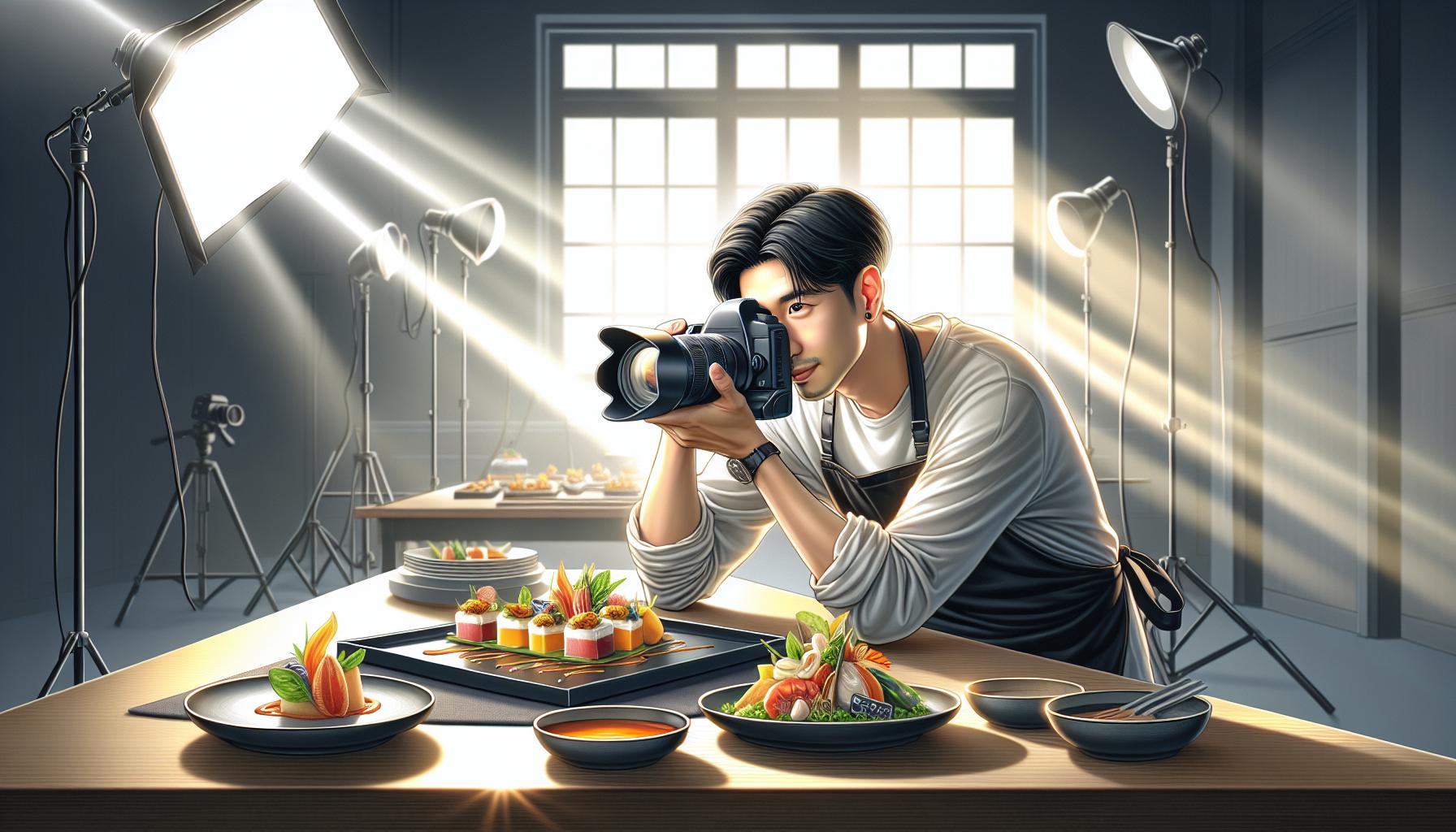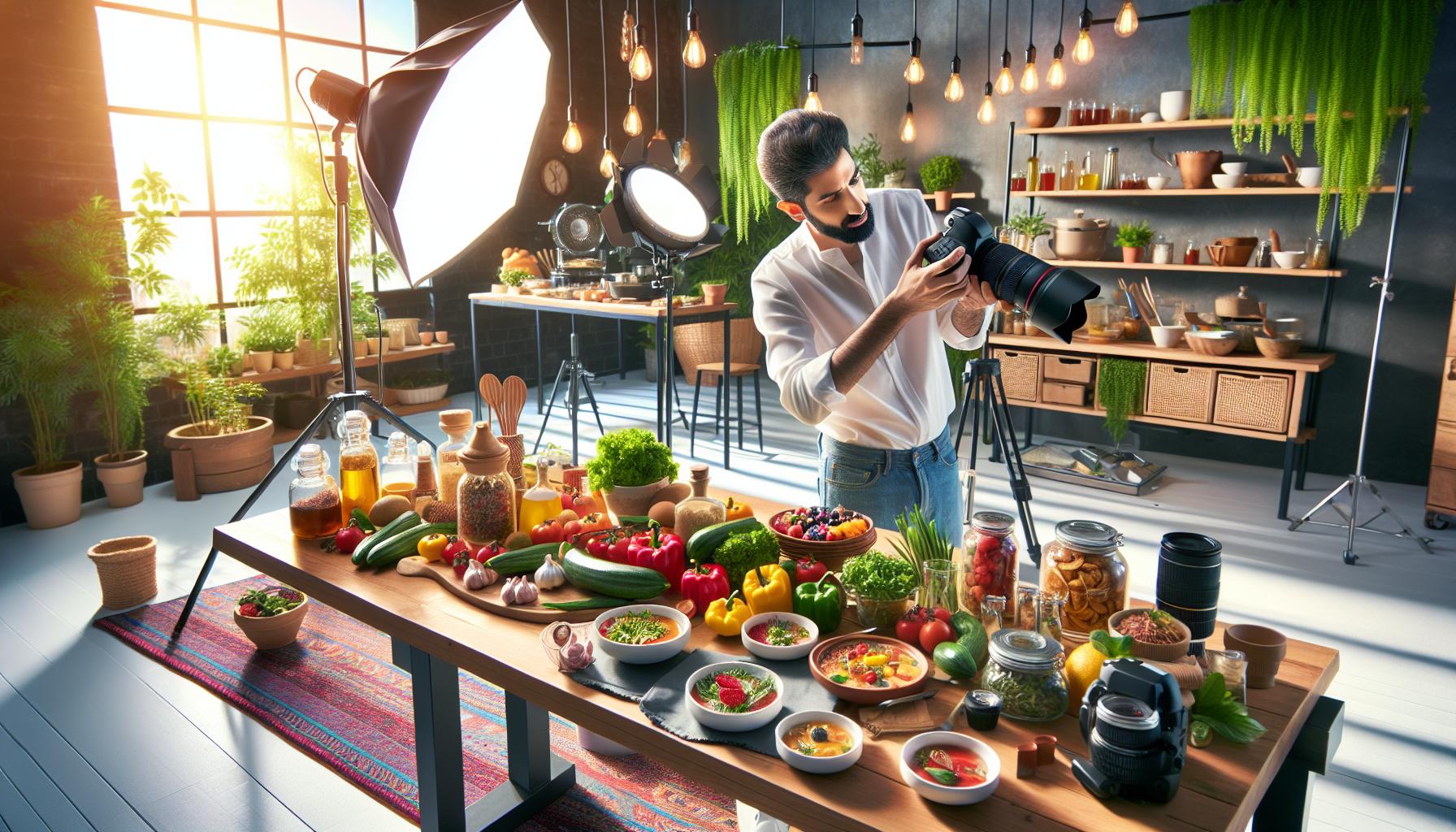Capturing mouthwatering food photos is an art, but getting paid for that art shouldn’t be a recipe for disaster. Food photographers often find themselves in a pickle when it comes to creating professional invoices that reflect their true value and expertise.
In today’s Instagram-driven culinary world, food photography has evolved from simple menu shots to sophisticated marketing assets that make viewers’ stomachs growl. Yet many talented photographers struggle with the business side of their craft, particularly when it’s time to bill clients. A well-structured invoice isn’t just about numbers – it’s about establishing professional credibility and ensuring timely payment for those perfect pasta shots and divine dessert close-ups.
Food Photography Invoice
A food photography invoice documents financial transactions between photographers and clients for food-related image creation services. This legal document outlines specific details about the photoshoot project, pricing structure, payment terms and service deliverables.
The invoice contains several essential components:
- Project Description: Details of the food photography session, including shoot duration, location and number of final images
- Equipment Fees: Charges for camera gear, lighting setups and specialized food photography tools
- Creative Fees: Costs for the photographer’s expertise, artistic direction and technical skills
- Food Styling: Expenses for ingredients, props and professional food styling services
- Post-Production: Rates for image editing, color correction and digital file preparation
- Usage Rights: Terms specifying how clients can use the photographs across different platforms
- Payment Schedule: Due dates, accepted payment methods and late payment penalties
Professional food photography invoices include business identifiers:
- Photographer’s Business Name
- Contact Information
- Tax ID Number
- Business Address
- Client’s Details
- Unique Invoice Number
- Issue Date
This documentation establishes clear expectations between food photographers and their clients while creating a professional paper trail for accounting purposes. Each invoice element helps prevent misunderstandings about project scope, deliverables and compensation terms.
| Invoice Component | Purpose |
|---|---|
| Project Details | Defines shoot scope and deliverables |
| Pricing Breakdown | Itemizes individual service costs |
| Payment Terms | Specifies when and how to pay |
| Usage Rights | Outlines image licensing agreements |
| Business Info | Provides legal and contact details |
Essential Elements of a Food Photography Invoice

A professional food photography invoice incorporates specific components that protect both photographers and clients in their business transactions. These elements establish clear expectations and ensure proper documentation of services rendered.
Client and Photographer Details
Every food photography invoice displays complete contact information for both parties involved in the project. The photographer’s section includes their business name, address, phone number, email address and tax identification number. Client details feature the company name, billing address, primary contact person and their preferred communication method. Adding professional credentials such as website URLs or social media handles reinforces the photographer’s brand identity on the invoice.
Project Specifications and Deliverables
The project section outlines exact specifications of the food photography assignment. This includes the number of final images, shooting locations, specific dishes or products photographed and image resolution requirements. Deliverables detail the file formats (RAW, JPEG, TIFF), delivery method (digital transfer, USB drive) and timeline for image submissions. The section also specifies any additional services like food styling, prop sourcing or post-production editing.
Pricing and Payment Terms
A detailed pricing breakdown itemizes all costs associated with the project:
| Cost Category | Description |
|---|---|
| Creative Fee | Base rate for photography services |
| Equipment | Camera gear, lighting, props rental |
| Food Styling | Ingredient costs, styling time |
| Post-Production | Editing, retouching, file preparation |
| Usage Rights | Licensing terms and duration |
Payment terms specify the total amount, deposit requirements, payment schedule and accepted payment methods. The invoice includes late payment penalties and any applicable taxes or additional fees.
Pricing Models for Food Photography

Food photography pricing models vary based on project scope complexity client requirements. Each model accommodates different budget ranges production needs to create professional food images.
Per Image Rates
Professional food photographers charge $150-$500 per final image based on complexity technical requirements. This rate structure includes:
- Basic photo editing color correction
- Standard lighting setup adjustment
- Raw file conversion digital processing
- Single location single dish setup
- Limited revisions (2-3 rounds)
Premium rates of $600-$1,500 apply for:
- Advanced compositing techniques
- Multiple angle captures
- Extensive prop styling
- Complex lighting scenarios
- Extended editing requirements
Half-Day and Full-Day Rates
Time-based pricing provides flexibility for multiple dish photography sessions:
| Session Type | Duration | Rate Range | Images Delivered |
|---|---|---|---|
| Half-Day | 4 hours | $800-$1,500 | 8-12 images |
| Full-Day | 8 hours | $1,500-$3,000 | 15-25 images |
These rates include:
- On-location setup breakdown
- Basic food styling assistance
- Equipment transportation
- Standard post-processing
- Digital file delivery
Package Pricing Options
Photography packages combine multiple services into cost-effective solutions:
Basic Package ($1,000-$2,000):
- 5-8 final images
- Single location shoot
- Basic styling
- Standard editing
- Web resolution files
Premium Package ($2,500-$5,000):
- 12-15 final images
- Multiple setups
- Professional food styling
- Advanced editing
- High-resolution files
- Social media crops
- 20-30 final images
- Multiple locations
- Full styling team
- Extensive editing
- All resolution formats
- Usage rights
Additional Charges to Include

Food photography invoices cover multiple costs beyond the base creative fee. These supplementary charges reflect the comprehensive nature of professional food photography services.
Equipment and Studio Fees
Professional food photography equipment fees encompass camera bodies, specialized lenses, lighting setups, tripods, tethering systems, and digital storage devices. Studio rental charges range from $300 to $800 per day, including controlled lighting environments, kitchen facilities, and workspace areas. Equipment rental fees vary based on specific gear requirements:
| Equipment Type | Daily Rental Rate |
|---|---|
| Camera Body | $150 – $300 |
| Specialty Lens | $75 – $200 |
| Lighting Kit | $200 – $400 |
| Tether Station | $100 – $250 |
Food Styling and Prop Costs
Food styling expenses incorporate ingredient purchases, preparation materials, and professional styling tools. A detailed breakdown of styling costs includes:
| Item Category | Typical Cost Range |
|---|---|
| Fresh Ingredients | $100 – $300 |
| Styling Tools | $50 – $150 |
| Props/Dishware | $75 – $200 |
| Specialty Items | $100 – $250 |
Professional food stylists charge $500 to $1,000 per day. Prop rentals for specialized dishware, linens, backgrounds, and decorative elements add $150 to $400 per project. Food costs vary based on recipe complexity and ingredient quality, ranging from $200 for simple dishes to $800 for elaborate multi-course presentations.
Best Practices for Invoice Management
Effective invoice management streamlines payment processes for food photographers while maintaining professional relationships with clients. Implementing systematic approaches to payment terms documentation creates a solid foundation for business operations.
Payment Terms and Late Fees
Payment terms outline specific due dates ranging from immediate payment to net-30 or net-60 arrangements. A standard deposit structure includes 50% upfront payment before the photoshoot with the remaining balance due upon image delivery. Late fee policies typically apply a 1.5% to 2.5% monthly interest charge on overdue balances after a 5-day grace period. Including early payment incentives such as 2/10 net 30 terms encourages prompt payments while maintaining cash flow. Clear payment methods listing accepted forms like bank transfers ACH direct deposits credit cards enhance client convenience.
Invoice Tracking Systems
Digital invoice management platforms automate payment tracking storage organization. Popular software options include QuickBooks FreshBooks Wave featuring automated payment reminders invoice status updates client communication tools. Cloud-based systems enable real-time access to payment histories generating financial reports tracking outstanding balances. Integration capabilities with accounting software simplify tax preparation expense tracking revenue monitoring. Mobile apps facilitate on-the-go invoice creation sending instant payment notifications status checks. Automated backup systems protect invoice records while ensuring compliance with tax regulations record-keeping requirements.
| Invoice Management Feature | Common Options |
|---|---|
| Payment Terms | Net-30, Net-60, 50% deposit |
| Late Fee Rates | 1.5% – 2.5% monthly |
| Early Payment Discount | 2/10 net 30 |
| Tracking Software | QuickBooks, FreshBooks, Wave |
Legal Considerations and Rights
Food photography contracts include specific usage rights that protect both photographers and clients. Digital image rights encompass social media posts, website displays, print materials and advertising campaigns with defined durations ranging from 1-5 years.
Copyright ownership remains with photographers unless explicitly transferred through written agreements. Clients receive licensed usage rights based on:
- Geographic territories (local, national, international)
- Media platforms (print, digital, broadcast)
- Time periods (6 months, 1 year, unlimited)
- Usage contexts (commercial, editorial, promotional)
Image licensing fees correlate directly with usage scope:
| Usage Type | Duration | Fee Range |
|---|---|---|
| Social Media | 1 year | $200-500 |
| Website | 2 years | $400-800 |
| Print Ads | 3 years | $800-2000 |
| Unlimited | Perpetual | $2000-5000 |
Legal requirements mandate inclusion of:
- GST/VAT registration numbers for tax compliance
- Business registration details
- Terms regarding image attribution requirements
- Liability clauses for food safety considerations
- Privacy policies for location shoots
- Cancellation policies with specific timeframes
Model releases become essential when photographing identifiable people in food establishments. Property releases protect photographers when shooting in private venues. Intellectual property rights extend to distinctive plating designs created by chefs, requiring additional clearance documentation.
Each invoice includes standard indemnification clauses protecting photographers from third-party claims related to image usage. Clear statements about image modification restrictions preserve artistic integrity while allowing necessary post-processing adjustments.
Invoicing Goes Beyond Simple Billing
Professional food photography invoicing goes beyond simple billing – it’s a crucial business tool that protects both photographers and clients. A well-structured invoice demonstrates professionalism while ensuring fair compensation for creative work and technical expertise.
By implementing detailed invoicing practices food photographers can streamline their business operations maximize their earnings and build lasting client relationships. The right combination of pricing strategies legal protections and professional documentation sets the foundation for a successful food photography business.
Smart invoice management paired with clear communication about deliverables rights and payment terms helps photographers maintain their artistic integrity while running a profitable enterprise. This attention to detail in business practices allows them to focus on what they do best – creating stunning food imagery that sells.

